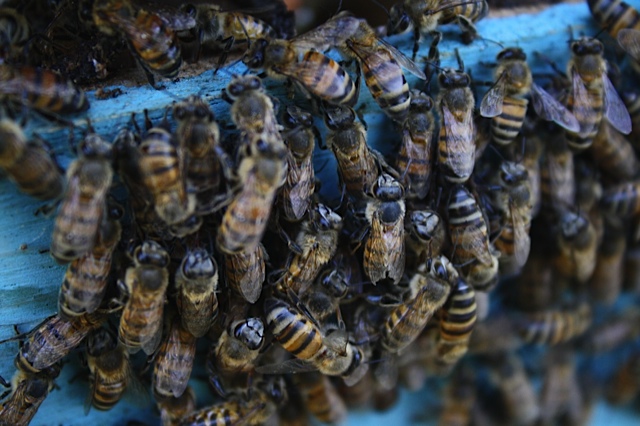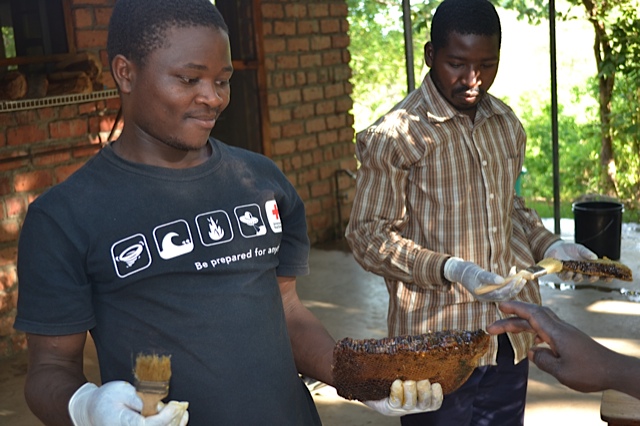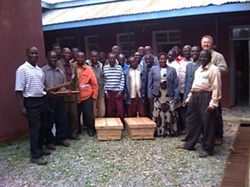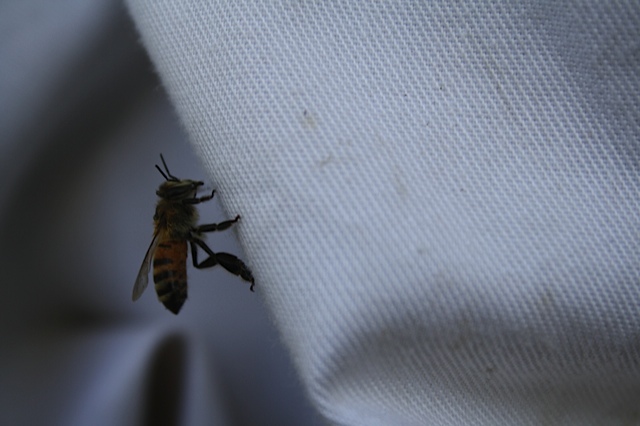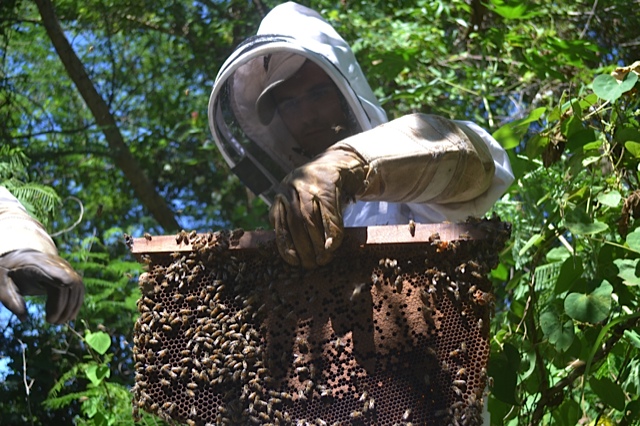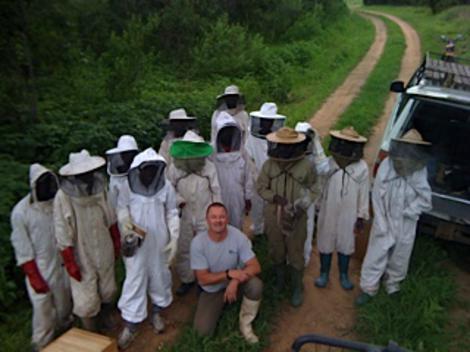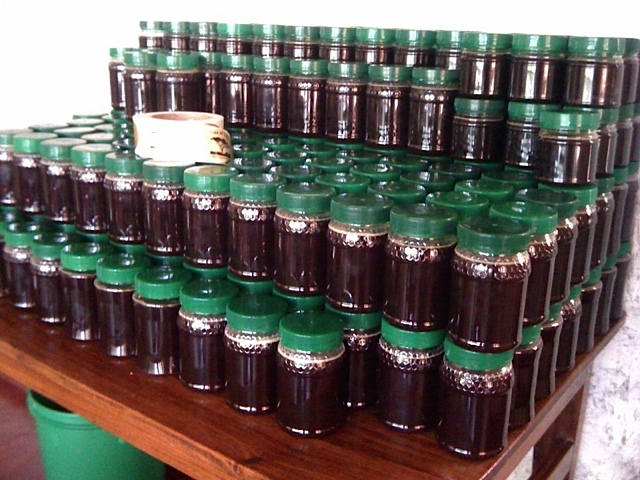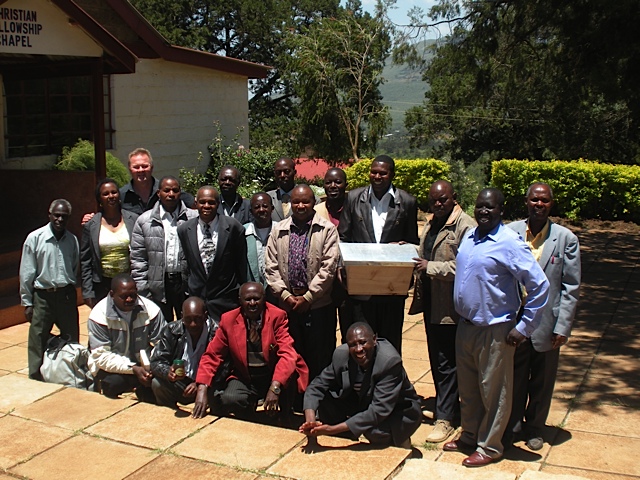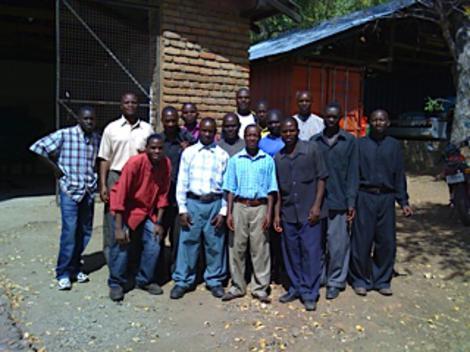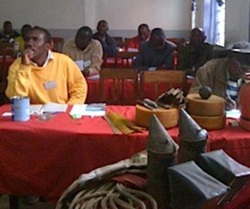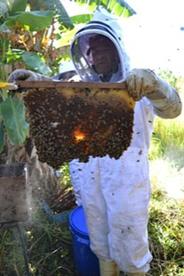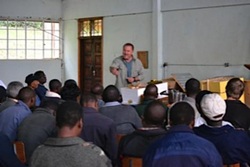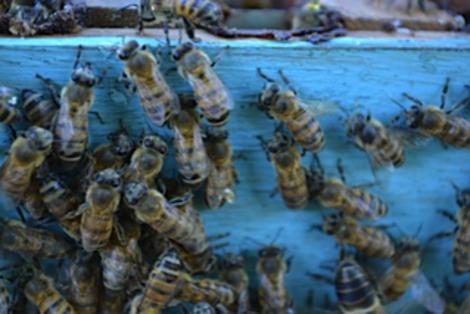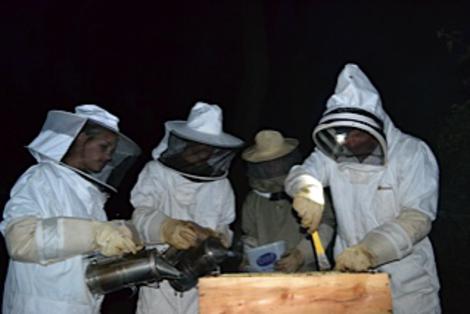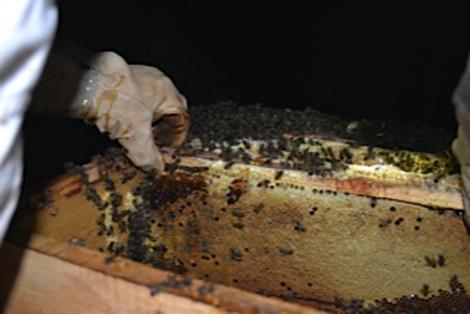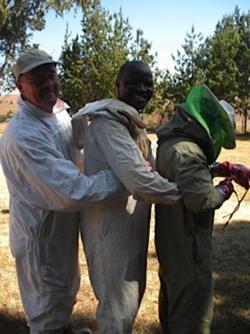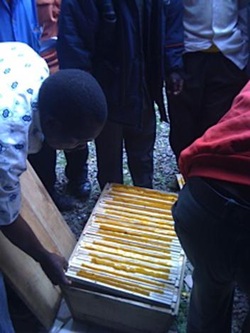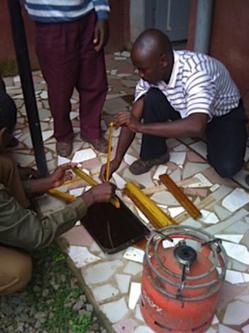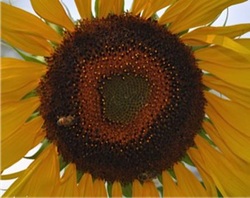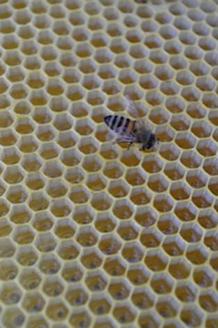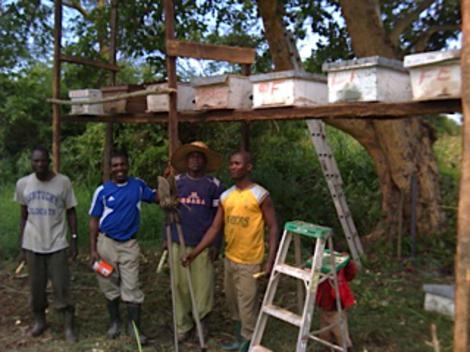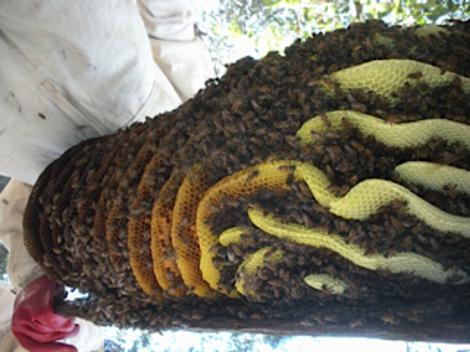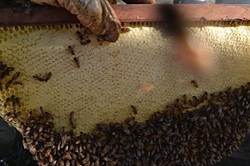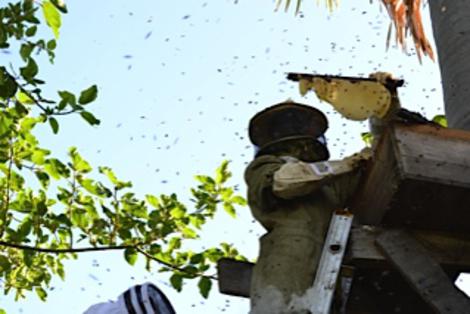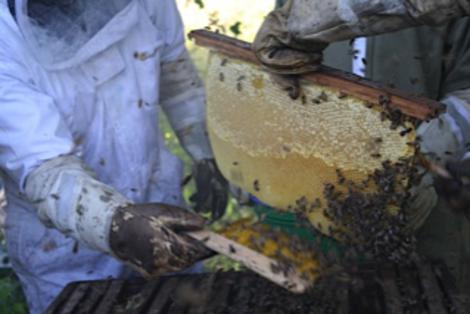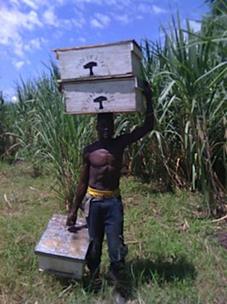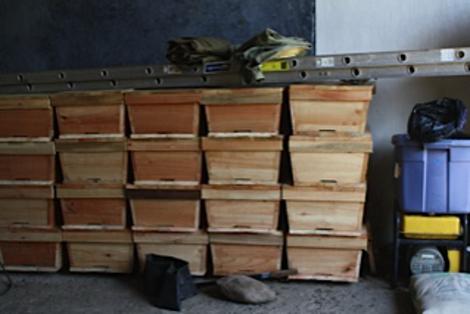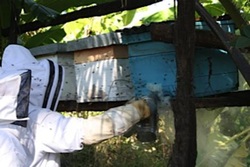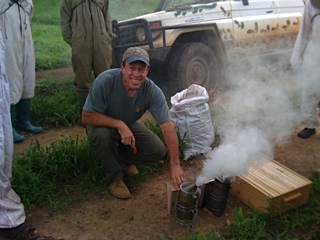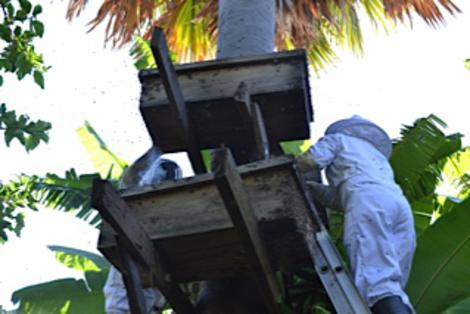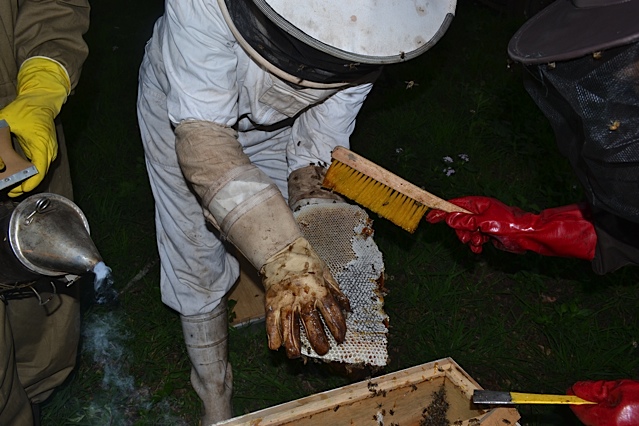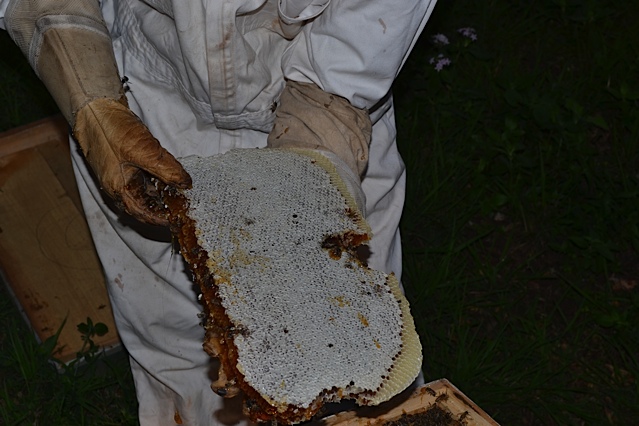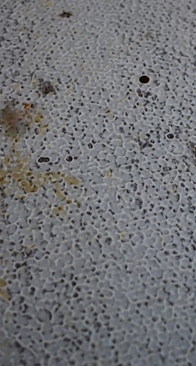|
Use the buddy system to check all your suits are bee proof. Nothing wrecks the harmony of the harvesting team like bees in suits.
|
Starter strips made of pure bees wax. These strips guide the bees as to where to build their comb. Each is attached to a 32 mm wide bar. This width allows bees enough space to build comb and still have room for “bee space” to navigate those combs as they put their store of pollen and nectar in the hive.
|
Frenki showing how to make bees wax starter strips. It is Easy!
|
|
Foragers will target sunflowers and any other desirable pollen or nectar bearing flowers. Bees practice flower fidelity, which causes them to continue to use a certain flower until they dry up. Only then do they begin a search for a
new type of flower. Foragers using sunflowers will not use another type of flower until there are no more sunflowers blooming in its area. |
Solitary African honeybee on open comb.
|
Swinging apiary. Multiple beehives located in prime bee fodder make working with African
bees much simpler. Bees will forage up to 3 kilometers as they look for pollen and nectar. In most cases your hives do not need to be spread out over a large area. |
|
Brushing bees off the honey comb back into the hive.
|
Lyanza, Rukwa Valley beekeeper with Top Bar hives.
|
Top bar hives going to the field. Hives should be well constructed, baited and placed in the field at the beginning of swarming season so that you can get prime, large swarms of bees in your hives.
|
|
After smoking your hive wait 3 minutes before opening so that the bees have a chance to fill their stomachs with honey. This will make them docile and much easier to work.
|
David fires up smokers for the Iringa seminar.
|
Harvesting from 30 bar top bar hives. These hardwood hives are durable and can last 25
years in the African sun and rain. |
